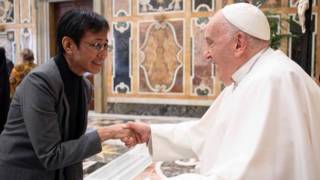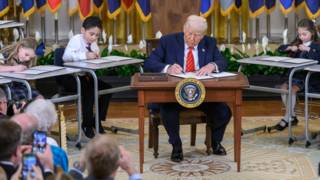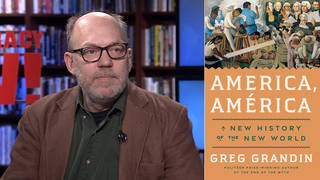
The 1968 Orangeburg massacre is one of the most violent and least remembered events of the civil rights movement. A crowd of students gathered on the campus of South Carolina State University to protest segregation at Orangeburg’s only bowling alley. After days of escalating tensions, students started a bonfire and held a vigil on the campus to protest. Dozens of police arrived on the scene, and state troopers fired live ammunition into the crowd. When the shooting stopped, three students were dead and 28 wounded. Although the tragedy predated the Kent State shootings and Jackson State killings and it was the first of its kind on any American college campus, it received little national media coverage. The nine officers who opened fire that day were all acquitted. The only person convicted of wrongdoing was Cleveland Sellers, a member of the Student Nonviolent Coordinating Committee, known as SNCC. He was convicted of a riot charge and spent seven months behind bars. He was pardoned in 1993. From Orangeburg, South Carolina, we speak with civil rights photographer Cecil Williams, who photographed the scene in the aftermath of the Orangeburg massacre. He is also the founder of the Cecil Williams Civil Rights Museum here in Orangeburg.
Transcript
AMY GOODMAN: This is Democracy Now!, democracynow.org, The War and Peace Report. I’m Amy Goodman. We’re broadcasting from the Martin Luther King Auditorium on the South Carolina State University campus here in Orangeburg. The university is the site of the 1968 Orangeburg massacre, one of most violent, least remembered events of the civil rights movement. The plaque just outside this building tells the story.
It was February 8th, 1968. A crowd of students gathered on the campus of South Carolina State to protest segregation at Orangeburg’s only bowling alley. After days of escalating tensions, students started a bonfire and held a vigil on the campus to protest. Dozens of police arrived on the scene. The state troopers fired live ammunition into the crowd. When the shooting stopped, three students were dead, 28 wounded. The three killed were 19-year-old South Carolina State students Henry Smith and Samuel Hammond, and 17-year-old high school student Delano Middleton, who came to South Carolina State every day after school to see his mom and get a bite to eat. Although the tragedy predated the Kent State shootings and Jackson State killings — it was the first of its kind on any American college campus — received little national media attention.
Here are some of the survivors of the Orangeburg massacre remembering that fateful day. This is an excerpt of an oral history project conducted by Jack Bass, who was a reporter at the time. This clip begins with survivor Robert Lee Davis.
ROBERT LEE DAVIS: It was a barrage shots, and like I say, it was maybe six or seven seconds: Boom, boom, boom, boom, boom, boom, boom, boom, boom! Students was hollering, yelling and running. So, by this time, I went into a slope right near the campus, by the front end of the campus, and I kneeled down. I got up to run, and I took one step. And that’s all I could remember. I took that one step. I got hit in the back. When I got hit in the back, this is when I got paralyzed. Students was trampling over me, because they was afraid.
JORDAN SIMMONS III: And I dropped to the ground immediately. Instinctively, I dropped to the ground. And within a second — within two or three seconds, I began to hear rounds going past my ears. And I felt my coat, like it was being — somebody was trying to pull it off, you know, with a — and what it really was was rounds hitting my coat. And then I got hit. Prior to being hit, just before, prior to being hit, I heard some — you know, people started yelling. In fact, I remember hearing somebody laugh just before we realized we were being shot at. We thought they were shooting in the air.
It entered right here and just missed my spine. I didn’t see much bleeding. I remember — I remember running, getting up and moving. I think the coat that I had on probably — foam is probably is compressed maybe. I don’t know. I had a large overcoat on. I remember asking him, I said, “Joe, can you see? Am I just nicked?” I was hoping that I just got grazed, you know? And he said, “No, it look like, you know, there’s a hole there, Jordan.” And I said, “Oh, golly.” You know?
And we got on to the infirmary, and there was blood all over the place. I mean, people were lying around, yelling and screaming, and the poor nurse on duty, she was — she was a mess. You know, I mean, she had never seen anything like that. It was worse than any combat situation. It was a bloody — let’s put it this way, it was probably equivalent to a combat situation in a war. The official count was 27 plus three, so 30. Three died, 27 injured.
UNIDENTIFIED: I remember getting shot in my face and being spun around, and instinct said, “You got to get out of here. You got to go to safety.” And the only thing I could think of was to get into the infirmary.
HAROLD RILEY: Just so happened there was a trash can in front of me. I was under pretty good coverage there with that trash can, see, but the trash can had some legs under it. And that’s how I got shot in the hip. The bullet come under the leg under the trash and caught me in the hip, under the trash can and caught me in the leg. If it wasn’t for the trash can, I probably would have been dead. If I would have stood up, I would have been dead. But I had enough courage to stay there for at least 45 seconds after the shooting. And folks was running all across me, crying and shooting. Some of them was crawling. And I realized they did a ceasefire. That’s when I got up and ran to the infirmary.
When I got to the infirmary, my best friend Sam, which he’s dead, one that they killed, he was laying in the middle of the floor. He was trying to grasp for air. And at that particular point, I didn’t even know I was shot. I crossed my leg in the infirmary, and I saw a little red spot on my pants. And I realized right then that I’d been hit down there. And by sitting down, watching Sam, getting emotional myself, when I stood up, I reached back there, I had a big apple back there. I didn’t realize I got shot in the hip neither, see? I got shot in the hip that hold the muscle, just like big as a big fist. And I realized I got shot in the hip. I got shot twice.
ROBERT LEE DAVIS: They took me to the school infirmary. And from there, I laid on the floor on a mattress. At this time, Sam Hammond, we was laying head to head by each other. And the last thing I could remember Sam said — they used to call me Big Dooley, because I was playing football at this time, I was weighing about 260. And this is when Sam asked me, he said, “Dooley, do you think I’m going to live?” I said, “Sam, you’re going to be all right, buddy.” And the next time I look over there, he was dead. I took my hand and put it over his face like this to close his eyes, because he died with his eyes open.
AMY GOODMAN: Robert Lee Davis and other survivors of the Orangeburg massacre in South Carolina. The nine officers who opened fire that day were all acquitted. The only person convicted of wrongdoing was Cleveland Sellers, a member of the Student Nonviolent Coordinating Committee, known as SNCC. Sellers was convicted of a riot charge, spent seven months behind bars. He was pardoned in 1993. He would later go on to be president of a South Carolina college. On the 40th anniversary of the Orangeburg massacre, Democracy Now! spoke with Cleve Sellers. He described what happened.
CLEVELAND SELLERS: It was just a clear case of the police opening fire without any provocation. There was no exchange of gunfire. The students were unarmed. And what precipitated it was the fact that the students on that Monday night went down to the bowling alley to try to bowl. And on Tuesday night when they went down, they were arrested. And at that point, you know, the state had kind of in mind a kind of Watts riot, and so they began to gear up. And on the night of February the 8th, it probably was 300 law enforcement officers in Orangeburg, and that included the FBI and Army Intelligence and the National Guards, the local and state police. So it was kind of an armed camp there. There were so many police that they could actually have walked on the campus and arrested every student on the campus, one officer could have gone over and arrested all the students around the campus.
AMY GOODMAN: We’re joined now by a photographer determined to make sure the Orangeburg massacre remains part of our national consciousness. Cecil Williams began documenting the civil rights movement in South Carolina in the '50s, photographed the scene in the aftermath of the Orangeburg massacre. He's also founder of the Cecil Williams Civil Rights Museum here in Orangeburg. We went there last night in the middle of a rainstorm. It’s just opened. It’s astounding. It shows the photographs of that fateful day, February 8th, and the events leading up to it and the aftermath.
It’s great to have you with us, Cecil Williams.
CECIL WILLIAMS: It’s good to be here today with you, as well.
AMY GOODMAN: The significance of this massacre in not only Orangeburg history? But I could only think, if this had gotten more attention back in 1968, perhaps Jackson State and Kent State wouldn’t have happened.
CECIL WILLIAMS: No, this was really a situation in Orangeburg that should not have happened. It was 1968, years after Congress and President Johnson passed the Civil Rights Acts. But in Orangeburg, there was this pocket of resistance, a segregated bowling alley, that upon — any citizen walking along Russell Street in Orangeburg encountered this on an everyday basis. But it was the students of State and Claflin and others that got involved. They wanted to change that. This was something that should not have been allowed to exist at the time, but it was a reality. And unfortunately, the deaths and the wounding of so many students was a tragedy that we should never forget.
AMY GOODMAN: I wanted to go to a clip from the documentary Scarred Justice: The Orangeburg Massacre, 1968. This clip features Roy Wilkins, who was head of the NAACP at the time.
ROY WILKINS: You know, the first news story we read in New York said there was an exchange of gunfire, and after this, the police shot. Now, there was no exchange of gunfire. There were no guns discovered on the campus among the students.
I call you — I call you to a hard task, harder than theirs. Theirs is difficult, but they don’t have any dead to carry home, and we do, a lot of dead from way back yonder. Count them over in your mind. These three here on this campus, 43 dead in Detroit last year, 23 dead in Newark, Medgar Evers. Run on back through history, through Reconstruction, through the Civil War. Think of all the dead we have buried. And so our task is bound to be heavier and more difficult.
AMY GOODMAN: That was NAACP head, at the time, Roy Wilkins. And now another clip from the documentary Scarred Justice: The Orangeburg Massacre of 1968, featuring Bakari Sellers. Yes, he’s a CNN commentator right now. He was the youngest state legislator ever elected, and he was the son of Cleve Sellers. This was Bakari Sellers commemorating the 40th anniversary of the massacre. He was right here in the MLK Auditorium at South Carolina State.
BAKARI SELLERS: We join here today in our own memorial to remember three dead and 27 injured in yet another massacre, that marked yet another people’s struggle against oppression. These men who died here were not martyrs to a dream, but soldiers to a cause. We find our state and individuals within our state showing no shame in making concentrated efforts to keep this day, that we come every year to remember, off the historian’s tongue and purged from our history books. A group of students built bonfires and sang protest songs. And within moments, along the embankments on the front of the campus, police positioned themselves along Highway 601. The state police then closed in on students with shotguns loaded with deadly double-aught buckshots. And for eight seconds — 1,001, 1,002 —
AMY GOODMAN: That was Bakari Sellers, son of Cleveland Sellers, remembering the massacre, 40 years later. It’s now 51 years. Cecil Williams, you were a photographer at the time. You photographed also — you did all the high school photos of kids for the yearbook. Talk about the three boys who died.
CECIL WILLIAMS: All of them were acquaintances of mine. I photographed Middleton at Wilkinson High School. But at South Carolina State, on a daily basis, you could see both of them involved in activities like practicing for baseball — for football, which they engaged in, or in the student center eating a bologna sandwich or — they were very friendly students. And they were so close —
AMY GOODMAN: Henry Smith and Samuel Hammond, 19, they were students here.
CECIL WILLIAMS: They were students here, and I photographed them for the yearbook.
AMY GOODMAN: And Delano Middleton was a high school student who came to see his mother all the time at the university?
CECIL WILLIAMS: Yes. I understand he was visiting the campus that night, as he did sometimes, waiting on his mother to get off of work, and became involved in this. However, I think that even if he had not been accidentally there, many of the high school students and others in the city also participated. This was not just State and Claflin students, but others involved in really trying to change things. Here was a segregated bowling alley, something that if citizens wanted to bowl, they would have to go 50 miles, or a hundred miles roundtrip, to Columbia to bowl.
AMY GOODMAN: You know, you really were critical in the case. Talk about the shell casings you found. You weren’t here that night of the bonfire, but the next morning you came in. Were there police tape around, investigating the crime scene of what happened? Of course, the police. It was the state troopers who killed the students, but…
CECIL WILLIAMS: Yes. After the incident was over, the next morning, very early — and by the way, I narrowly missed being on the site. The only reason I was really not on the site, because I photographed everything that the students did, as the yearbook photographer. But the next morning, about 7:00, I appeared on the campus. And I saw all kinds of things on the ground, and I started picking them up. And some of them were the shells from the shotguns that the Highway Patrolmen had used.
Those shells were later used in the investigation to identify which Highway Patrolmen shot them. In the trial, which took place in Florence, I was called in to testify. And I understand that in about 30 minutes they found them innocent. A tragedy. It was shocking. And even today, there has been no, really, assistance for the students who were wounded, nothing to even bury the students. So, it’s really even a tragedy that affects us today.
AMY GOODMAN: And you have the shell casings in the Cecil Williams Museum.
CECIL WILLIAMS: Yes. The museum is something I started because I felt that there was a need to not only preserve South Carolina history, but so much of our history here in this state, we were at the forefront, beginning of the civil rights movement.
AMY GOODMAN: We’re going to do Part 2 of the discussion and talk more about the history, but I want to thank you so much for being here, Cecil Williams, photographer, author, best known for his photography documenting the civil rights movement in South Carolina beginning in the ’50s, founder of the Cecil Williams Civil Rights Museum here in Orangeburg.
A very special thanks to SCSU President James Clark; Roland Haynes Jr., who runs this auditorium; Ken Davis; Curtis Bradley; and all the other Bulldog staffers who made the broadcast from the MLK Auditorium possible. Special thanks here to our team: to John Hamilton, Denis Moynihan, Carla Wills and Libby Rainey.
I’m Amy Goodman. We’ll be broadcasting tonight from 6 p.m. Eastern Standard Time. Check it out at democracynow.org, the first-ever Forum on Environmental Justice. I’m Amy Goodman. Thanks for joining us.












Media Options